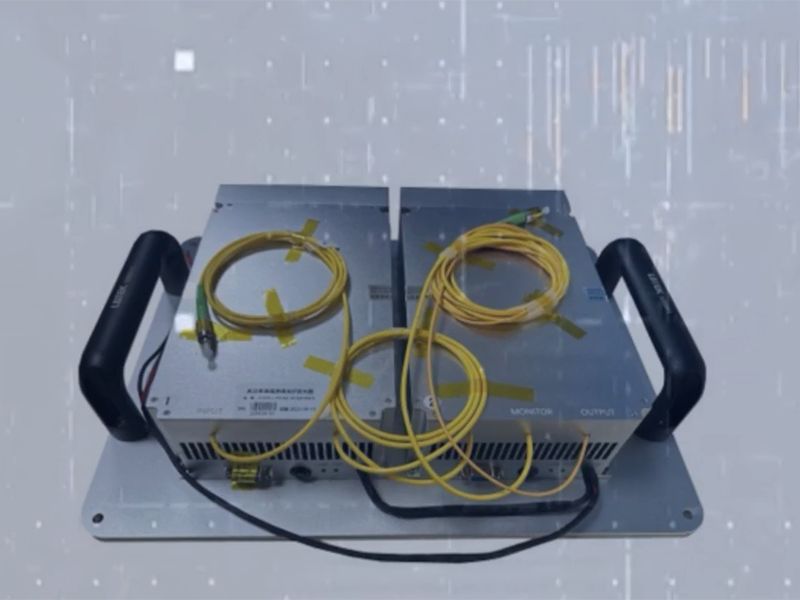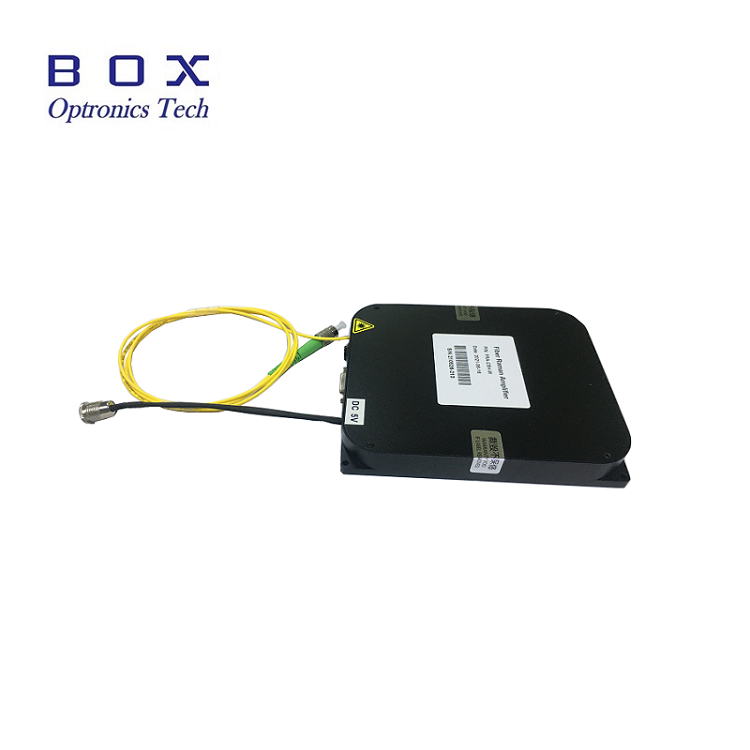Raman Amplifier
A Raman amplifier is an optical amplifier used in fiber-optic communication systems to boost the power and extend the reach of optical signals. It operates based on the Raman scattering phenomenon, named after the Indian physicist C.V. Raman, who discovered it in the 1920s. Raman amplifiers are commonly used in long-haul optical transmission systems to compensate for signal losses and improve the overall performance of the communication link.
Send Inquiry
Product Description
Here is an introduction to Raman amplifiers:
Raman Scattering: Raman scattering occurs when light interacts with the vibrational modes of the molecules in a medium. In the Raman effect, a small fraction of the incident light energy is scattered at different wavelengths, resulting in the transfer of energy from the pump light to the signal light. This energy transfer allows for amplification of the signal light.
Stimulated Raman Scattering (SRS): In Raman amplifiers, stimulated Raman scattering is utilized to enhance the signal power. Stimulated Raman scattering occurs when the signal light, traveling through an optical fiber, interacts with the medium's molecular vibrations, resulting in the transfer of energy from the pump light to the signal light. This energy transfer leads to amplification of the signal light and can compensate for losses in the transmission fiber.
Distributed Raman Amplification: Raman amplifiers can be implemented in a distributed manner along the fiber link, known as distributed Raman amplification. In this configuration, multiple segments of the optical fiber are used as amplification stages, with each segment acting as an individual amplifier. This distributed approach provides a more efficient utilization of the pump power and improves the overall system performance.
Benefits and Advantages: Raman amplifiers offer several advantages in optical communication systems. They provide amplification across a wide range of wavelengths, making them suitable for wavelength-division multiplexing (WDM) systems. Raman amplifiers can compensate for fiber loss at different wavelengths, enabling longer transmission distances. They also exhibit a lower noise figure compared to other types of amplifiers, leading to improved signal quality.
Pumping Configurations: Raman amplifiers can be pumped using different pump sources, such as diode lasers or fiber lasers, depending on the specific system requirements. Multiple pumping configurations, including bi-directional pumping or counter-pumping, can be employed to optimize the amplification efficiency and manage signal distortions.
Hybrid Amplification: Raman amplifiers are often used in combination with other types of optical amplifiers, such as erbium-doped fiber amplifiers (EDFAs), to create hybrid amplification systems. These systems take advantage of the complementary characteristics of different amplifiers to optimize performance, combining the benefits of Raman amplification with the simplicity and efficiency of other amplification technologies.
Raman amplifiers have significantly contributed to the advancement of long-haul fiber-optic communication systems. Their ability to compensate for signal losses, extend transmission distances, and improve overall system performance has made them a critical component in high-capacity optical networks. With ongoing research and technological advancements, Raman amplifiers continue to evolve, enabling faster and more reliable data transmission over optical fibers.
Raman Scattering: Raman scattering occurs when light interacts with the vibrational modes of the molecules in a medium. In the Raman effect, a small fraction of the incident light energy is scattered at different wavelengths, resulting in the transfer of energy from the pump light to the signal light. This energy transfer allows for amplification of the signal light.
Stimulated Raman Scattering (SRS): In Raman amplifiers, stimulated Raman scattering is utilized to enhance the signal power. Stimulated Raman scattering occurs when the signal light, traveling through an optical fiber, interacts with the medium's molecular vibrations, resulting in the transfer of energy from the pump light to the signal light. This energy transfer leads to amplification of the signal light and can compensate for losses in the transmission fiber.
Distributed Raman Amplification: Raman amplifiers can be implemented in a distributed manner along the fiber link, known as distributed Raman amplification. In this configuration, multiple segments of the optical fiber are used as amplification stages, with each segment acting as an individual amplifier. This distributed approach provides a more efficient utilization of the pump power and improves the overall system performance.
Benefits and Advantages: Raman amplifiers offer several advantages in optical communication systems. They provide amplification across a wide range of wavelengths, making them suitable for wavelength-division multiplexing (WDM) systems. Raman amplifiers can compensate for fiber loss at different wavelengths, enabling longer transmission distances. They also exhibit a lower noise figure compared to other types of amplifiers, leading to improved signal quality.
Pumping Configurations: Raman amplifiers can be pumped using different pump sources, such as diode lasers or fiber lasers, depending on the specific system requirements. Multiple pumping configurations, including bi-directional pumping or counter-pumping, can be employed to optimize the amplification efficiency and manage signal distortions.
Hybrid Amplification: Raman amplifiers are often used in combination with other types of optical amplifiers, such as erbium-doped fiber amplifiers (EDFAs), to create hybrid amplification systems. These systems take advantage of the complementary characteristics of different amplifiers to optimize performance, combining the benefits of Raman amplification with the simplicity and efficiency of other amplification technologies.
Raman amplifiers have significantly contributed to the advancement of long-haul fiber-optic communication systems. Their ability to compensate for signal losses, extend transmission distances, and improve overall system performance has made them a critical component in high-capacity optical networks. With ongoing research and technological advancements, Raman amplifiers continue to evolve, enabling faster and more reliable data transmission over optical fibers.
Hot Tags: Raman Amplifier, China, Manufacturers, Suppliers, Factory, Customized, Cheap, Low Price, Brands, Quotation, Price
Related Category
Erbium-dopted fiber amplifier (EDFA)
Fiber Raman amplifier (FRA)
Semiconductor Optical Amplifier (SOA)
Send Inquiry
Please Feel free to give your inquiry in the form below. We will reply you in 24 hours.








